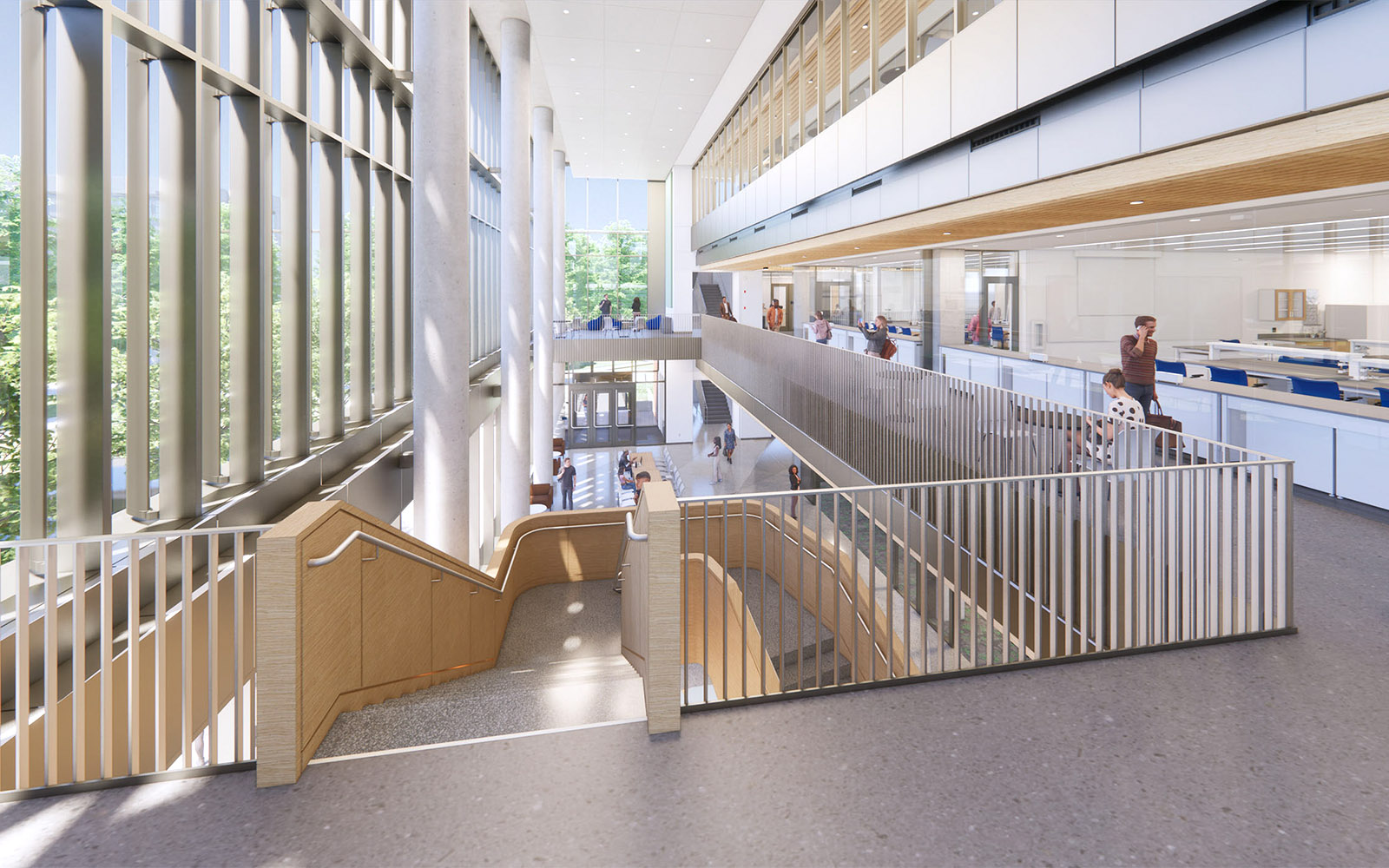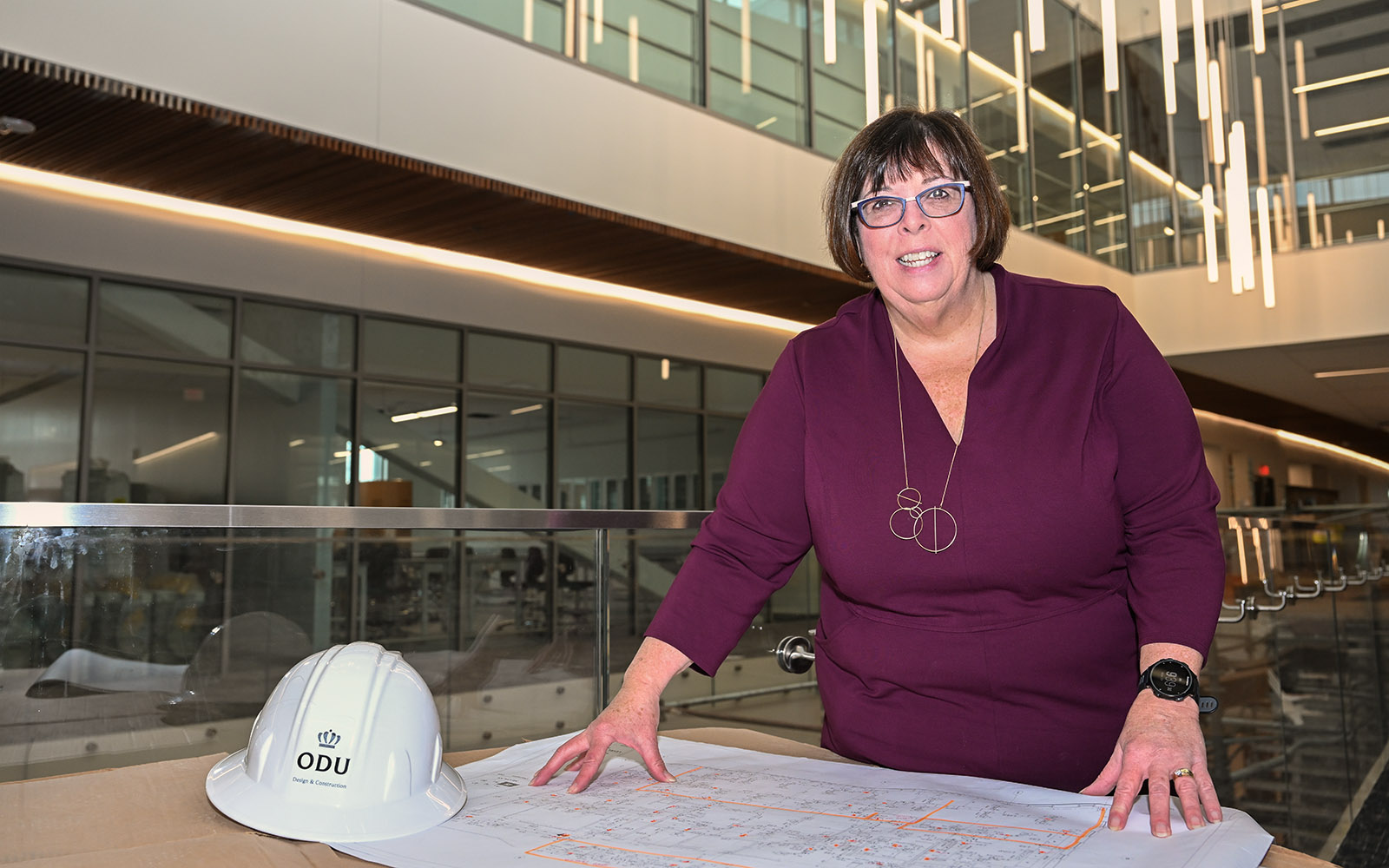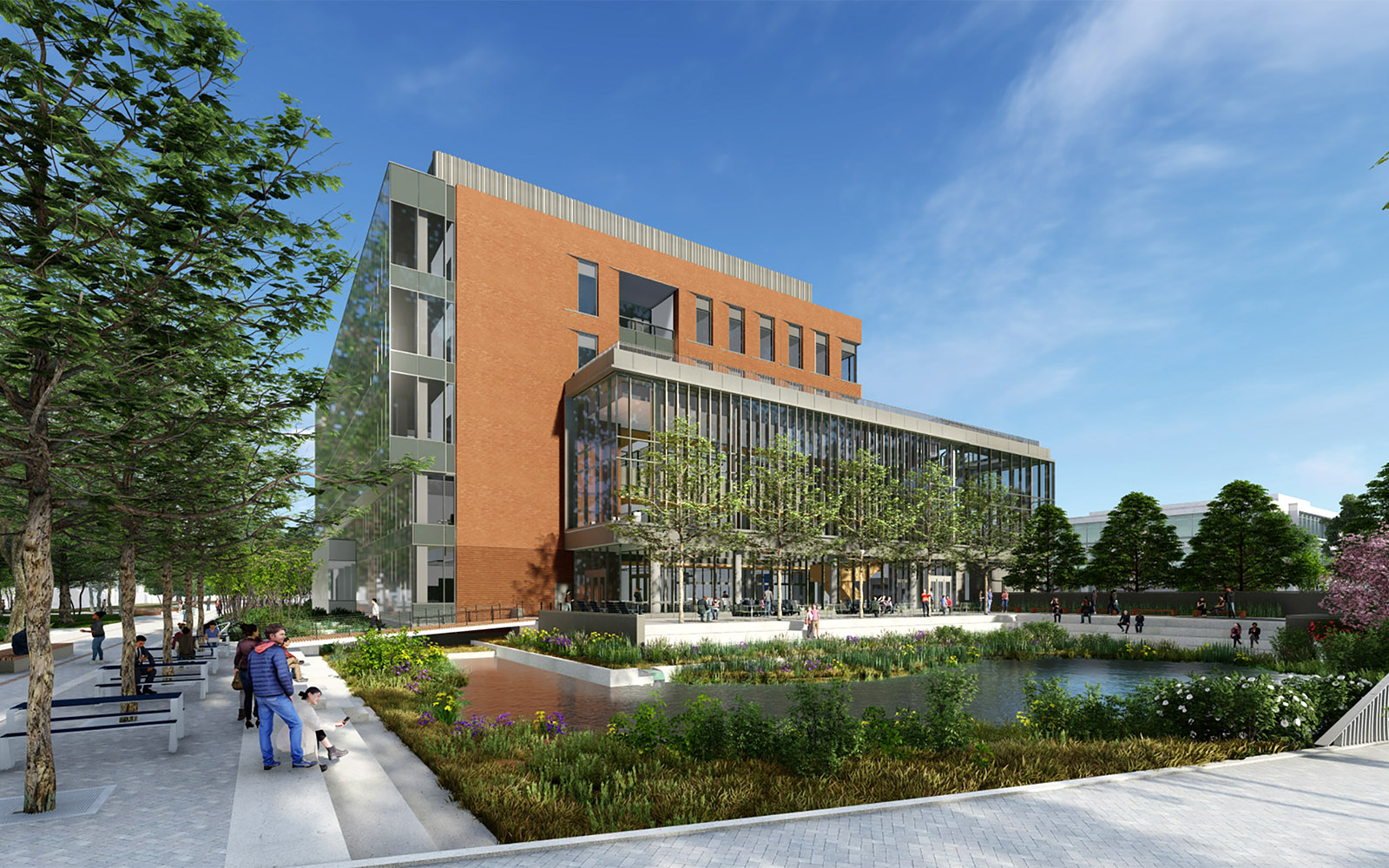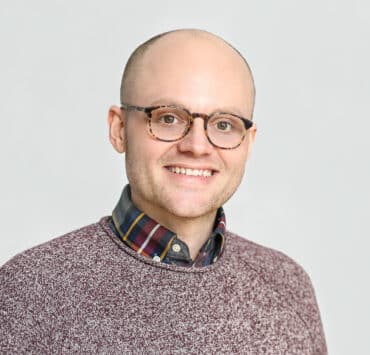|
Getting your Trinity Audio player ready...
|
As university architect for Old Dominion University, Jean Kennedy-Sleeman is in the center of its the action. She’s been with ODU since 2015 and draws on her decades of experience as a project manager in the private sector working on campuses across the county. Her work involves improving the university’s design processes and standards while boosting policies that expand architect pools.
In 2021, Old Dominion University (ODU) was recognized as one of the top-tier research universities in the country after receiving an R1 designation by the Carnegie Foundation. It was an important step in the university’s evolution, signaling a time of growth, prosperity, and prestige for the Norfolk, Virginia, campus and its 22,500-plus students.

Now, Sleeman and her colleagues have an opportunity to capitalize on ODU’s reputational stride with the construction of a new ODU Biology Building this summer. Located in the heart of campus, the building will be equipped with lab and research space, state-of-the-art classrooms, ground common spaces, greenhouses, and a tropical conservatory open to the public. Sleeman believes the center, which will replace three existing buildings, will “bring new life to campus” and reinforce the university’s identity.
“We’re a young, entrepreneurial, and innovative campus that wants to continually raise the bar,” she says. “With this project, I think we’ll set a new precedent for our design and our mission.”
That’s in part because of the thoughtful way her team has approached the building’s design. To highlight the department’s commitment to sustainability, the team developed creative ways to manage stormwater, including engaging the stormwater ponds in the building design. Common spaces and classrooms have large desks, open spaces, and an abundance of natural light to foster productivity and collaboration. Flexible functionality has also been a key consideration; from a concrete frame to wet labs that will easily convert to dry labs.
“I often say, ‘You do realize that this building will outlive everyone sitting at this table? Not just future generations of students but faculty and staff.’ We’re not about creating a signature moment but a long-lasting moment.”
Jean Kennedy-Sleeman
These considerations harken back to something Sleeman often reminds the team.
“The building has to sustain itself for a very long time,” she says. “It has to be maintainable but also look like it’s not from the ‘60s. I often say, ‘You do realize that this building will outlive everyone sitting at this table? Not just future generations of students but faculty and staff.’ We’re not about creating a signature moment but a long-lasting moment.”
Creating something timeless doesn’t happen in a vacuum. Sleeman and her colleagues understand that it comes out of a strong collaboration between various stakeholders, including those who’ll eventually sit in the naturally lit classrooms and who frequent the convertible labs. On this end, she’s not only proud of the effort her department has put in to solicit feedback from biology stakeholders but her ability to serve as a bridge between them and the individuals building on their behalf.

“I realize that many faculty members don’t know our industry, don’t know the process, or how long it takes. I don’t think people realize that it takes tens of thousands of decisions to make a building happen and that it’s nonstop,” she says. “Design also doesn’t just come out of your head. It needs to ferment and evolve.”
That’s why she developed a design process guide, using accessible terminology that her colleagues can understand. In the guide, she lays out the kinds of decisions faculty need to make and why they’re important. But that’s not the only way she’s helped to empower them during the decision-making process.
“When I sit in on meetings related to the project, I watch the room and ask, ‘Are the faculty getting it? The architects just proposed something major. Did they understand?’ Then, I’ll stop and ask questions. Not because I don’t understand the answer but to make sure the faculty heard it,” Sleeman says.
“We’re a young, entrepreneurial, and innovative campus that wants to continually raise the bar. With [the Biology Building], I think we’ll set a new precedent for our design and our mission.”
Jean Kennedy-Sleeman
Her approach to collaborating with faculty is similar to the way leads within her department. She’s slow to speak, quick to listen, and passionate about empowering others. She also works to be empathetic and to make sure everyone is comfortable with their roles.
“Everyone comes from a different place. Put yourself in their shoes and figure it out,” she says. “When staff come to me, I don’t want to just say ‘yes’ or ‘no’ but explain here’s why. They appreciate the thinking behind an answer because the next time, they know what I’m going to say and propose a solution that I’ll agree to. Then after that, they already know what to do and might not even need my guidance.”

Sleeman’s partners have noticed her paying that knowledge forward. “It’s been a pleasure working with Jean and our partner architects at Ballinger in what has been a tremendously collaborative and inclusive process in the development of the new Biology Building,” says Dade Van Der Werf, principal at VMDO Architects. “Jean has successfully brought multiple university stakeholders into the process and helped building users new to design and construction understand the importance of their input as well as when and where they have the opportunity to inform the design process to help realize the university’s project goals.
“Through her deep engagement with the design team, stakeholders, and university administrators and trustees, Jean has helped to steadily advance the quality and sophistication of architecture on campus, not only in this project, but throughout her tenure at ODU,” he continues. “The process has been all the more successful thanks to the foundation of design standards and process she has built with multiple university constituents.”
Ballinger is an award-winning integrated design practice currently partnering with VMDO, and proudly collaborating with Jean Kennedy-Sleeman, to design Old Dominion University’s new 163,000 GSF Biology Building. Uniquely designed for sustainability and resiliency, the new home for the Department of Biological Sciences will transform its central campus location into a dynamic nexus of experiential learning and discovery to become an enduring, inspirational campus place for students and faculty. Learn more at ballinger.com


